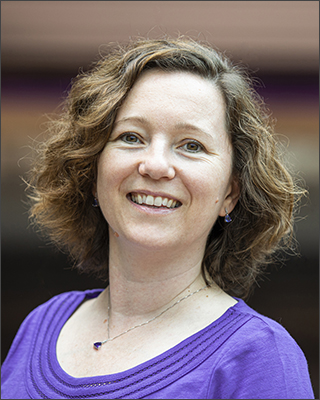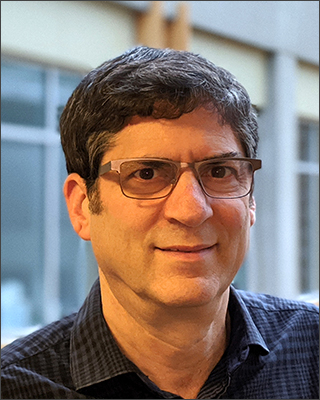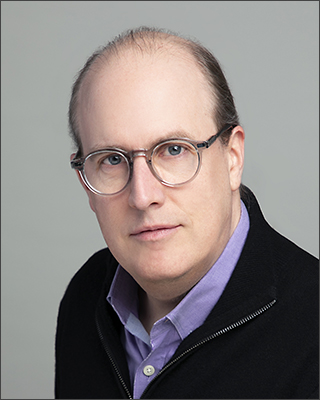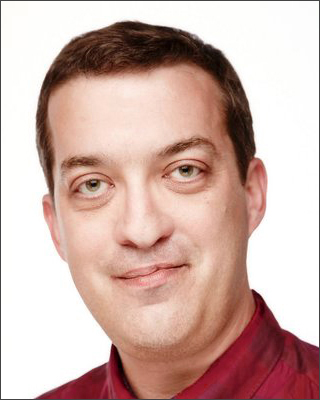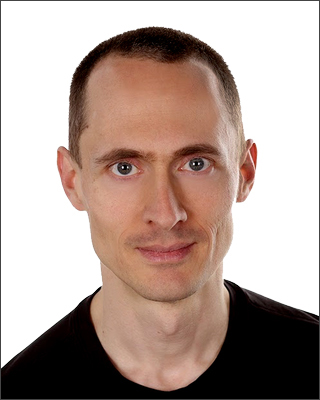Two of the premier professional societies in the field of computing, the Association for Computing Machinery (ACM) and the IEEE, recently announced their latest class of Fellows representing the highest status accorded to their respective memberships. Three Allen School faculty members reached that pinnacle this year: Magdalena Balazinska and Paul Beame, who were named Fellows of the ACM, and Joshua R. Smith, who was elevated to Fellow of the IEEE. In addition to this year’s faculty honorees, former Allen School postdoc Aaron Hertzmann of Adobe Research and undergraduate alumnus Brad Calder (B.S., ‘91) of Google were named Fellows of the IEEE and ACM, respectively.
With the latest announcements, a total of 24 current or former Allen School faculty members have been elevated to ACM Fellow, and 16 have achieved IEEE Fellow status.
Magdalena Balazinska, Fellow of the ACM
Professor and incoming Allen School director Magdalena Balazinska was named a Fellow of the ACM for her contributions to scalable distributed data systems. Balazinska, who is a member of the UW Database Group and former director of the eScience Institute, focuses on advancing new and improved data management tools and techniques for data science, big data systems, cloud computing, and the rapidly growing field of imaging and video analytics.
“The ACM Fellow recognition is an immense honor, and I would like to thank the ACM and everyone who contributed to this nomination for their support,” said Balazinska. “I would also like to thank all my students and collaborators over the years. While I’m the one recognized today, the research accomplishments were a team effort.”
Balazinska, who joined the University of Washington faculty in 2006, was among a wave of researchers driving technical innovation in the early days of stream processing systems. She was lead author of a seminal paper in 2005 that introduced a new method for increasing the fault tolerance of distributed data-intensive stream processing applications. At the time, these applications were becoming increasingly prevalent in a variety of domains, including computer networking, financial services, medical information systems, and the military. The paper, which drew upon Balazinska’s Ph.D. research at MIT as part of the Borealis project, employed a replication-based approach that increased the resiliency of applications while offering a configurable trade-off between availability and consistency. Balazinska and her collaborators were recognized for the enduring impact of their work in 2017 with a Test of Time Award from the ACM’s Special Interest Group on the Management of Data (ACM SIGMOD). Previously, Balazinska earned a Test of Time Award from the Working Conference on Reverse Engineering (WCRE) in 2000 for her work on advanced clone analysis for automatically refactoring software code.
An internationally recognized leader in data management research and innovation, Balazinska earned the inaugural VLDB Women in Database Research Award from the conference on Very Large Data Bases in 2016 for her inspirational record of contributions to scalable distributed data systems. That record includes the Nuage project, which enabled scientists in a variety of domains to store, share, and analyze massive quantities of data in the cloud using Hadoop. Nuage was a product of her work with AstroDB, a group she co-founded with her fellow computer scientists and UW astronomers to develop new capabilities for analyzing the massive quantities of data generated by high-powered telescopes and simulations. Balazinska also co-led the Myria project to accelerate big data as a service that incorporated her work on new techniques for efficient iterative processing, multi-way join processing, and federated analytics. She and the team designed the Myria system to provide a fast, flexible, cloud-based service for scaling and optimizing data manipulation tasks — including otherwise time-consuming tasks such as cleaning, filtering, grouping, and evaluation — in preparation for statistical analysis or deployment in machine learning. Along the way, the Myria project introduced an array of innovative approaches to the provision of cloud-based database services, such as basing them on performance levels rather than resources, offering shared optimizations, enabling elastic memory-management, and more.
Balazinska’s contributions to the field of data management extend beyond her research contributions to curriculum development and leadership. Under a major IGERT grant from the National Science Foundation, she led the creation of the UW’s Data Science and Advanced Data Science Ph.D. options — currently offered to students in more than a dozen departments or schools — and co-led the effort to create an Undergraduate Data Science option for students to supplement their major program of study by acquiring skills in this rapidly burgeoning field. Before her appointment to lead the Allen School, Balazinska served as the university’s first Associate Vice Provost for Data Science and spent two years at the helm of the interdisciplinary eScience Institute, which promotes programs and best practices that support data-intensive discovery across campus.
“The overarching goal of my work is to empower people to work with data so that they do not need to be data management specialists to gain new knowledge and accelerate the pace of innovation,” Balazinska explained. “I also think we need to give students the opportunity to become well-versed in these techniques, which are becoming increasingly important to many different fields other than computer science.”
Paul Beame, Fellow of the ACM
Paul Beame, a professor in the Allen School’s Theory of Computation group, was named a Fellow of the ACM for his contributions in computational and proof complexity and their applications as well as for outstanding service to the computing community. Beame, who has been a member of the UW faculty since 1987 and currently serves as an associate director of the Allen School, is widely known for his work that spans both pure and applied complexity. The latter is unusual, since the subject of computational complexity is generally not regarded as an applied discipline.
Beame is widely known for his work in computational complexity that provides lower bounds and algorithms that yield optimal bounds for a range of core computational problems. Notable contributions include the first optimal depth circuits for integer division, which matched the depth for the other basic arithmetic operations, and optimal time-space tradeoff lower bounds for integer sorting. He and his co-authors proved the strongest time-space tradeoff lower bounds known for any Boolean function in P — a result that has not been improved upon in nearly 20 years — and devised an optimal data structure for the predecessor problem, which is a substantial improvement over binary search.
Beame’s fundamental work in proof complexity, which examines the sizes of proofs and ways of expressing them, played a significant role in the growth of the field. Proof complexity seeks to answer the question of whether there is a method that always permits the writing of small proofs; if there is, then NP=coNP. Among Beame’s most significant achievements in this domain was the establishment of the first exponential lower bounds on the size of constant-depth proofs, which were previously only known for resolution, a depth one proof system. He also introduced an algebraic proof system based on multivariate polynomial equations for Hilbert’s Nullstellensatz and described the first non-trivial lower bounds for algebraic proofs of propositional logic.
Another area in which Beame has made significant contributions is applied computational complexity. This work has involved taking insights from computational complexity and proof complexity building on them and applying them to research problems in a variety of other domains, including formal methods for software engineering, computer-aided verification, database theory, satisfiability (SAT) solving, artificial intelligence, and machine learning. For example, Beame and his collaborators were among the first to apply model checking to issues related to software by showing how symbolic model checking could be effectively applied to software specifications in addition to the hardware models for which it previously had been used. His paper analyzing SAT solvers using proof complexity, which presented the first precise characterization of clause learning as a proof system, is among his most cited work. Beame has also contributed influential research on the complexity of probabilistic inference, including the Cachet model counter and lower bounds for knowledge representation for probabilistic inference. His research on optimal lower bounds and algorithms for database query evaluation in the massively parallel computation (MPC) model not only introduced the lower bound model, but actually coined the MPC term for such computations that is now widely used.
“Throughout my career, I have been drawn to understanding the complexity of solving concrete computational problems,” Beame said. “In the collaborative atmosphere of the Allen School, I have been able to learn about new concrete problems and find areas where I can apply computational complexity ideas just by walking down the hall and talking with colleagues. This has led me to a broader view of computational complexity as both a pure and applied field. The success of those collaborations has been very gratifying, as is this recognition by ACM.”
In addition to his research accomplishments, Beame has devoted decades of service to the computing community. He spent more than 15 years in volunteer leadership — first as vice chair, and then chair — of the IEEE Computer Society’s Technical Committee on Mathematical Foundations of Computing (TCMF), sponsor of the annual Symposium on Foundations of Computer Science (FOCS). He went on to chair the ACM Special Interest Group on Algorithms and Computation Theory (SIGACT), sponsor of the annual Symposium on the Theory of Computing (STOC). In that role, he was instrumental in the creation of the STOC Theoryfest. He simultaneously served for 4 years as a member-at-large of the ACM Council, where he successfully advocated for providing open access to ACM conference proceedings. Beame also has earned the appreciation of colleagues for taking the lead in creating and maintaining a comprehensive online history of both the STOC and FOCS conferences as a reference for the theoretical computer science community.
“The theoretical computer science community has provided a great environment for research and involves an extraordinarily talented group of people,” Beame observed. “I have just wanted to do my part in sustaining that community and keeping it vibrant; doing that has naturally led me to work on broader issues, like open access, that are of interest to all researchers.”
Joshua R. Smith, Fellow of the IEEE
Professor Joshua R. Smith, who holds a joint appointment in the Allen School and Department of Electrical & Computer Engineering, was named a Fellow of the IEEE in recognition of his contributions to far‐ and near‐field wireless power, backscatter communication, and electric field sensing.
“I am so grateful for this award, which recognizes the impact of work with many wonderful students and collaborators over the years,” said Smith, who is the Milton and Delia Zeutschel Professor in Entrepreneurial Excellence at UW, where he leads the Sensor Systems Laboratory. “I thank my family for their support and enthusiasm over so many years.”
Smith’s work on sensing and wireless power has had far-reaching impact in a variety of industries. His early research while a Ph.D. student at MIT focused on electric field sensing, now known as mutual capacitance sensing, which enables non-contact sensing of the three-dimensional position, orientation and mass distribution of a person’s body. This work formed the basis for a system adopted by automobile manufacturers that enables intelligent airbag deployment decisions based on a passenger’s size and body configuration. Mutual capacitance went on to be widely adopted in touchscreens starting with Apple’s iPhone, and subsequently, most other smartphones. Later, Smith built mutual capacitance sensors into robot fingers to create electric field pretouch, which improves a robot’s manipulation capabilities by allowing its finger to detect an object before contact.
Before joining the UW faculty in 2011, Smith spent five years at Intel Research Seattle, where he focused on creating new capabilities in wireless power, wireless sensing, and robotics. One of the projects initiated during his time at Intel was the Wireless Identification and Sensing Platform (WISP). A collaboration between Intel and UW, WISP offered the first fully programmable platform for wireless, battery-free sensing and computation powered by radio waves. The team went on to earn a Best Paper Award at the 2009 IEEE International Conference on RFID for integrating capacitive touch sensing into passive RFID tags using WISP technology. Smith also led the development of the wireless resonant energy link (WREL), which uses magnetically coupled resonators to efficiently transfer of wireless power even as range, orientation and load vary. Smith’s first Ph.D. student, Alanson Sample, now a faculty member in Electrical Engineering & Computer Science at the University of Michigan, was a key contributor to both WISP and WREL. Smith, together with heart surgeon Dr. Pramod Bonde of Yale University, evolved the WREL technology into FREED, the free-range resonant electrical energy delivery system for powering a ventricular assist device implanted in the human body — without requiring the traditional wire through the patient’s chest. This work on wireless power for implanted devices led to a series of other projects on power and communication for neural implants through the Center for Neurotechnology, a National Science Foundation Engineering Research Center, where Smith is Thrust Leader for Communication and Interface; and the University of Washington Institute for Neuroengineering (UWIN) funded by the Washington Research Foundation.
After his arrival at UW, Smith continued to build upon his previous work. Aiming to push the boundaries of wireless computing even further, he teamed up with Allen School professor Shyam Gollakota to develop ambient backscatter, a technique that leverages existing, ambient wireless television and cellular signals into a source of power as well as a communication medium which earned a Best Paper Award at SIGCOMM 2013. The researchers later extended backscatter communication to WiFi with passive WiFi, which received a Best Paper Award at NSDI 2016. To enable internet-connected implantable devices to communicate with commodity devices such as smartphones and smart watches, they developed interscatter, a technique for using backscatter to transform wireless transmissions over the air from one technology to another that earned a Best Paper Award at SIGCOMM 2016. Smith and his collaborators extended the utility of their approach with long-range backscatter, the first wide-area backscatter communication system that achieves coverage at distances up to 2.8 kilometers — orders of magnitude greater than prior systems — that garnered a Distinguished Paper Award at IMWUT 2017. Smith also co-led the UW team behind the world’s first battery‐free phone. The team has also developed a series of ultra-low-power battery-free wireless cameras that communicate via backscatter.
Smith has co-founded three venture-backed UW start-up companies based on his work: Wibotic, developer of near-field wireless robot charging systems, with CEO Ben Waters, a UW Ph.D. alumnus; Jeeva Wireless, developer of ultra-low power communication systems based on backscatter innovation, with Gollakota and UW alumni Bryce Kellogg, Aaron Parks, and Vamsi Talla; and Proprio, developer of light-field capture and visualization solutions to aid surgery, with Allen School Ph.D. student James Youngquist; UW Foster Business School alumnus Gabe Jones; Ken Denman, venture partner at Sway Ventures and member of the UW Foundation Board; and Dr. Sam Browd, a neurosurgeon at UW Medicine and Seattle Children’s Hospital.
“UW is such a supportive environment,” Smith said. “It is a privilege to work with so many wonderful colleagues and students, at an institution that is firing on all cylinders.”
Aaron Hertzmann, Fellow of the IEEE
Smith is joined among the latest class of IEEE Fellows by Aaron Hertzmann, who completed a postdoc in the Allen School’s Graphics & Imaging Laboratory (GRAIL) before going on to spend 10 years on the computer science faculty at the University of Toronto. Hertzmann is currently a principal scientist at Adobe Research and has been an affiliate professor at the Allen School since 2005. He was recognized by IEEE for contributions to computer graphics and animation, following on the heels of his selection as a Fellow of the ACM last year.
Hertzmann’s research draws from computer graphics, machine learning, animation and other fields. He devoted his early research career to advancing new methods for extracting meaning from images and for modeling human visual capabilities, motion, and 3D structure. Hertzmann also produced a variety of novel software tools for creating expressive, artistic imagery and animation that mimics human drawing and painting. Many of his contributions have been adopted by the broader graphics, gaming, and special effects communities.
Hertzmann’s most recent work focuses on the development of techniques for producing robust, seamless immersive experiences in virtual reality. These include a new method for incorporating gated clips and view-dependent video textures in 360-degree video to ensure the user doesn’t miss important narrative elements, and a novel approach for introducing motion parallax and real-time 360-degree video playback in VR headsets that improves the immersive experience while reducing the risk of motion sickness. Hertzmann also contributed to the development of Vremiere, a system for direct editing of spherical video for VR environments that was the basis of Adobe’s Project Clover in-VR editing interface.
Lately, Hertzmann has shifted his attention to pushing boundaries in the realm of visual perception and the interplay between art and AI. “I’m currently interested in ways that insights from computer science can inform our understanding of art: of understanding how we create and perceive aesthetics and line drawings,” he explained.
Brad Calder, Fellow of the ACM
Allen School alumnus Brad Calder was named a Fellow of the ACM in recognition of his contributions to cloud storage, processor simulation, replay, and feedback-directed optimization of systems and applications. Calder, who went on to earn his Ph.D. in computer science from the University of Colorado Boulder after graduating from UW, is currently Vice President of Product and Engineering of Technical Infrastructure and Cloud at Google overseeing compute, networking, storage, database and data analytics services.
Before joining Google, Calder spent nearly 9 years at Microsoft, where he was among the co-founders of the Microsoft Azure cloud computing service. Calder and his team earned a Best Paper Award at USENIX 2012 for introducing a new approach to erasure coding in Windows Azure Storage using local reconstruction codes (LRC) that enabled durable storage with low overhead and consistently low read latencies. Calder previously spent over a decade as a faculty member at the University of California, San Diego, where he co-directed the High Performance Processor Architecture and Compilation Lab. During his tenure at UCSD, where he now serves as an adjunct professor, Calder published more than 100 research papers spanning systems, architecture, and compilers.
The ACM is the world’s largest educational and scientific professional society devoted to advancing the field of computing. The ACM Fellow designation is held by less than 1% of the organization’s global membership. Learn more about the 2019 Class of ACM Fellows here.
IEEE has more than 400,000 members in 160 countries representing diverse engineering fields, from aerospace systems and biomedical engineering, to computing and telecommunications, to electric power and consumer electronics. Each year, IEEE elevates a select group — representing less than one-tenth of 1% of the organization’s global membership — to the status of Fellow based on their extraordinary contributions. View the complete list of 2020 IEEE Fellows here.
Congratulations to Magda, Paul, Josh, Aaron and Brad on this well-deserved recognition!


